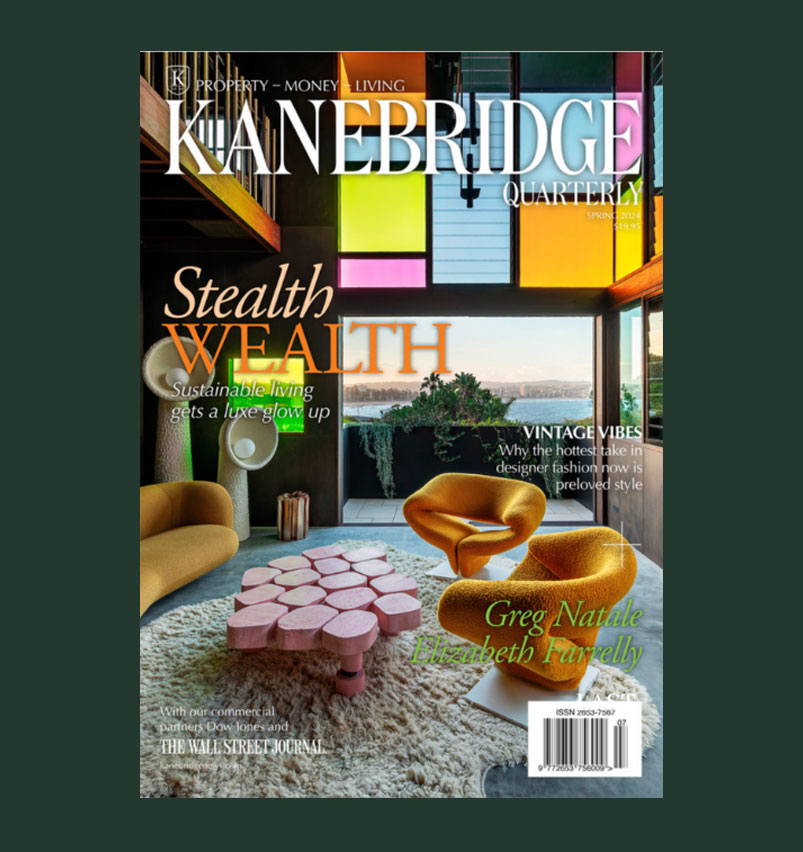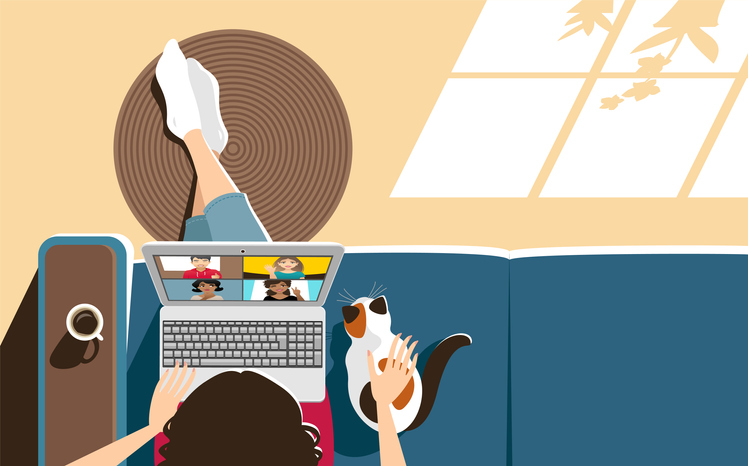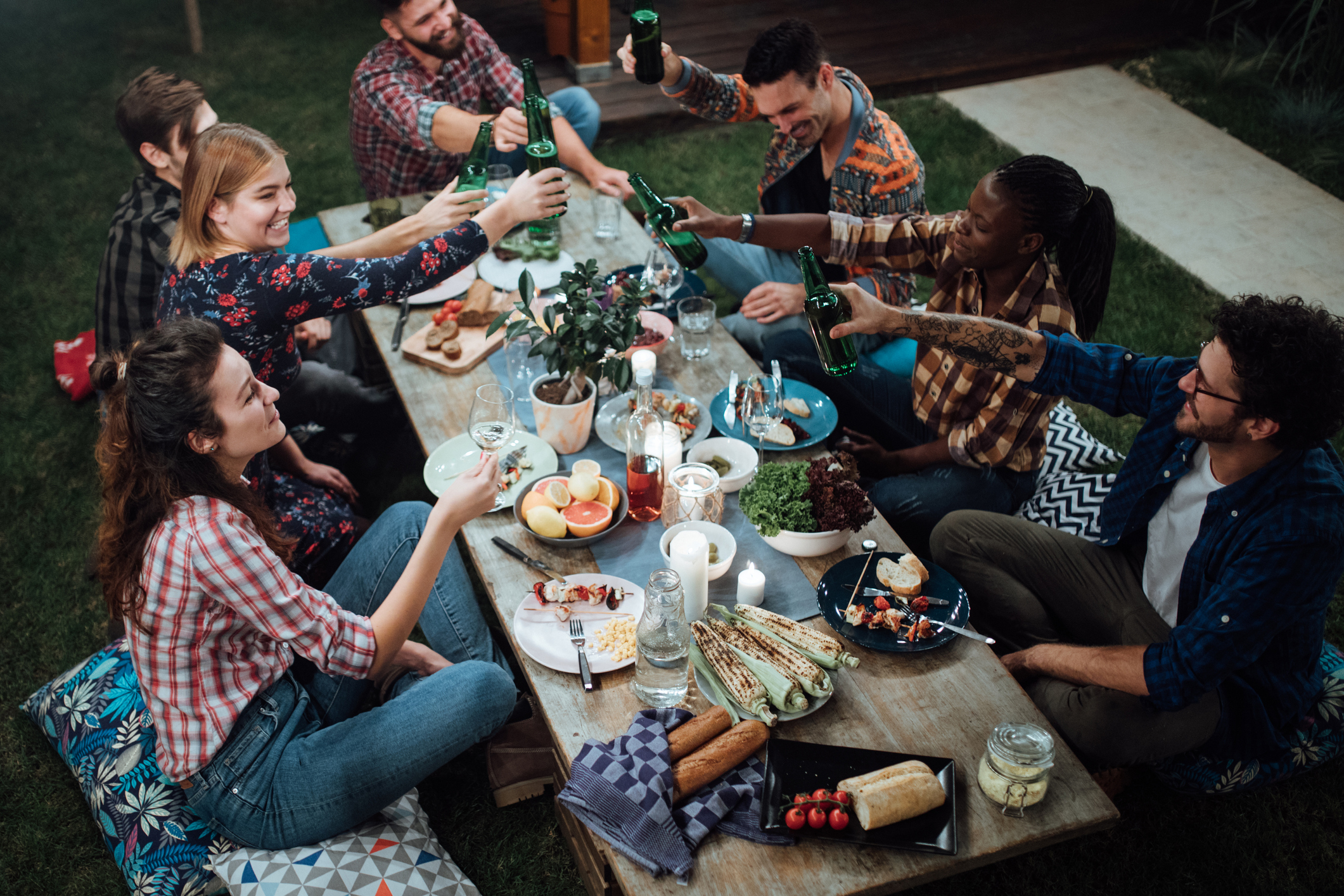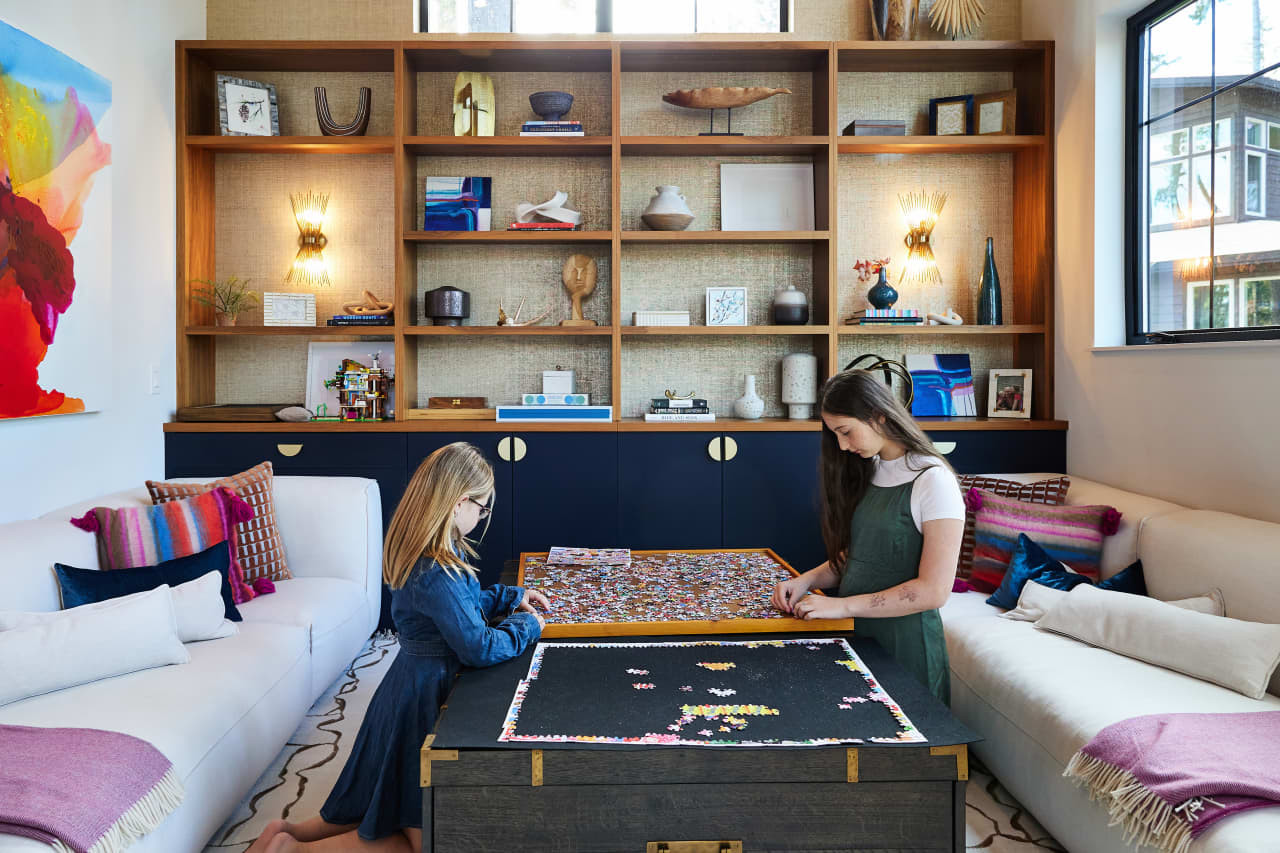Remote Work Is the New Signing Bonus
Workers are trading jobs, enticed by the guarantee of flexible schedules and working from home.
After almost a year and a half of working from home, many white-collar employees say they are not willing to return to corporate offices full-time. Even whispers of returning have been enough to send some professionals searching for an exit—and plenty of bosses are welcoming them to new jobs with the promise they can work remotely, at least most of the time.
The push for flexibility is adding to the wave of resignations rippling through the U.S., recruiters say, and motivating many employers to re-evaluate their work-from-home policies. Canadian video-software firm Vidyard says it has seen a steep increase in job applications in recent months after emphasizing that roles can be performed mostly at home. And at Allstate Corp. , conversations about every new position now begin with the question: “Why can’t this be done remotely?” says Carrie Blair, the insurance giant’s chief human resources officer. “It’s a big workforce shift for us.”
Hardly anyone will return to Allstate’s offices full time, Ms. Blair says, after employees expressed in surveys that they didn’t want to and the company found most functions don’t require an office setting. Allstate recently decided 75% of roles can be performed remotely, and another 24% can be done on a hybrid basis, with workers splitting time between home and the office. The 1% who will go back to a pre-Covid-style office setting include some top executives and certain people in field offices with customer-facing roles.
 Brandon Minaya, a 26-year-old tech-company employee, calls remote work ‘the arrangement that I want to keep.’ PHOTO: JOVELLE TAMAYO FOR THE WALL STREET JOURNAL
Brandon Minaya, a 26-year-old tech-company employee, calls remote work ‘the arrangement that I want to keep.’ PHOTO: JOVELLE TAMAYO FOR THE WALL STREET JOURNALMarc Cenedella, founder and chief executive of Ladders, a job-search site for roles that pay north of $100,000 a year, says greater flexibility is shaping up as a perk that companies can wield to poach talented people.
“Remote is going to be the new signing bonus,” he says. “Instead of dangling, ‘We’ll give you $10,000 if you sign for this job,’ it’ll be: ‘Instead of having to commute 35 minutes every day, go to work, and get in your car and drive 35 minutes home, you can work from your home office all the time.’ ”
Matt Croak, a 27-year-old software engineer in New York City, wasn’t actively looking for a new job earlier this year, but believed his consulting-firm employer could begin reopening its offices this summer in a hybrid capacity. So, when a recruiter reached out in April about an engineering role at an e-commerce company that would allow him to continue working fully from home, he pursued it. The job comes with higher pay and the chance to learn new skills, but it will also allow him to spend mornings reading in his living room in Brooklyn, instead of hunched over a subway seat while commuting 45 minutes into Manhattan. Mr. Croak says that, over the past 16 months, he has had more personal time for meditation and other self care—activities he wasn’t ready to give up in order to rush back and forth to and from an office again.
“I do really want to work from home permanently,” he says.
More American workers are quitting their jobs than at any time in at least 20 years, according to the Labor Department. One factor behind the trend, executives say, is that more employers are outlining their return-to-office plans in detail, giving employees a clearer sense of what to expect next. Apple Inc. recently said it wants most office workers to show up Mondays, Tuesdays and Thursdays, with the option to work remotely on Wednesdays and Fridays. Other companies, such as Pontiac, Mich.-based United Wholesale Mortgage, are recalling thousands of employees to a corporate campus in the coming weeks, with a goal of getting close to 100% of workers back and resuming a traditional five-day workweek, according to the company’s chief executive, Mat Ishbia.
“You see tons of bold statements. Companies saying, ‘No remote work.’ Some companies are saying, ‘We’re getting rid of all of our offices,’ ” says Bret Taylor, president and chief operating officer of Salesforce.com Inc. In many cases, it is the employees who are primarily calling the shots. “There’s like a free market of the future of work and employees are choosing which path that they want to go on.”
In a recent survey of 2,000 workers commissioned by Prudential Financial Inc., a quarter of respondents said they planned to look for a new job post-pandemic, with many of those planning to leave citing work-life balance issues as among their top concerns. Half of the respondents reported feeling that the pandemic had given them more control in deciding the direction of their careers.
Jeff Simonds, a 38-year-old who lives in Burlington, Vt., began a new remote job this past week as a search engine optimization manager at Updater Inc., a New York-based tech company that makes software designed to help with logistical challenges when people relocate. Before the pandemic, Mr. Simonds worked in an office and says he never would have considered doing otherwise.
 One benefit of working for an all-remote company, says Pallavi Daliparthi: ‘You know there’s nothing happening in the background, in-person somewhere.’ PHOTO: PALLAVI DALIPARTHI
One benefit of working for an all-remote company, says Pallavi Daliparthi: ‘You know there’s nothing happening in the background, in-person somewhere.’ PHOTO: PALLAVI DALIPARTHIOver the past year, he says he appreciated being able to throw in a load of laundry during the workday or to begin his day from home earlier so that he could squeeze in a round of golf in the late afternoon, with his work completed. The new role came with a raise, and he says he considers the ability to work remotely as a kind of bonus. “It’s the freedom to kind of define my own workday,” he says.
His prior company, which provides marketing services and tools for auto dealers, had tentatively discussed returning to the office in September, Mr. Simonds says.
Though a number of companies are still calling workers back to offices, some bosses realize policies must shift to remain competitive. At First Advantage Corp. , an Atlanta technology company that employs more than 3,500 people and had its initial public offering this week, CEO Scott Staples says the company plans to reopen its offices in phases over the coming months. Some employees, particularly those in technology roles, will likely be able to spend more time working remotely.
“I think CEOs of the future just have to have a lot more flexibility on policies and procedures. It’s the only way you’re going to grow and survive,” Mr. Staples says. “There are certain roles where if a person doesn’t want to come back in for a variety of reasons, we can accommodate that, and I think that will make us an attractive employer.”
Technology giant Adobe Inc. said this week that its roughly 23,000 employees could spend 50% of their time at home once U.S. offices begin reopening in July, but also said that remote-work arrangements would expand for those who desire them.
“Our default work arrangement going forward for employees is to be flexible,” says Gloria Chen, the company’s head of human resources. Adobe won’t mandate which days employees go into offices or track how much time they spend in them. “Flexibility means flexibility,” she says.
Last fall, as Amy Culver’s employer began discussing plans to eventually return to the office, she found herself filled with dread. Without her typical 40-to-60-minute commute, Ms. Culver, a marketing copywriter, had more time to spend with her daughters, 11 and 16. She was able to continue horseback riding, her postwork outlet, even as the winter sun set earlier. Previously, she and her husband, who works irregular hours, might go several days each week without seeing each other. Working from home outside Richmond, Va., eliminated that issue, she says, and made it easier to spend time together as a family.
 The Seattle beach where Brandon Minaya often starts his days looking for seals and birds. PHOTO: JOVELLE TAMAYO FOR THE WALL STREET JOURNAL
The Seattle beach where Brandon Minaya often starts his days looking for seals and birds. PHOTO: JOVELLE TAMAYO FOR THE WALL STREET JOURNAL“I felt like I had a handle on everything for the first time in a long time,” says Ms. Culver, who is 43.
Though her manager told her she could continue to work from home even after the office in Richmond reopened, Ms. Culver worried about scrutiny and whether she’d be treated as a second-class citizen in the company, losing out on opportunities if she stayed in her basement workspace while co-workers returned. She began applying for jobs at companies that allow most employees to work remotely, and quickly had an offer that appealed to her. In November she started at When I Work, an employee-scheduling software company.
Today Ms. Culver typically works from 10 a.m. to 6 p.m., but says she has the autonomy to take her daughter to driver’s ed class in the middle of the day or return to a project later in the evening when she feels creative.
“Now that I work for a remote-first company, we’re all in the same boat. I’m not concerned that’s going to hold me back at all,” she said. “I’m on a team, but I still get to work from home, and I feel like that’s the best of both worlds.”
Other employees have chosen companies with defined remote-work cultures. Pallavi Daliparthi, a 36-year-old who lives outside Austin, Texas, took a job in May with GitLab Inc., a fully remote company that sells tools for software developers. Ms. Daliparthi, now a senior manager on GitLab’s sales team, had previously worked remotely at a large enterprise-technology company, and knew that in a hybrid environment, decisions could be made over coffee in the office that she may have missed while at home. “Whereas here, everybody really is remote,” Ms. Daliparthi says. “You know there’s nothing happening in the background, in-person somewhere.”
A lot of people say they hope to stay remote for years to come. Brandon Minaya, a 26-year-old tech-company employee, moved to a neighbourhood in Seattle late last year that has few links to public transportation, anticipating that he would no longer be commuting to an office in future roles. In March, he took a fully remote client-facing position with Intellum, an Atlanta-based company that makes education software.
Instead of taking an hourlong bus ride each way to a WeWork location, as he did in a previous role, Mr. Minaya says he often starts his mornings walking to a nearby beach, where he looks for seals and birds. Most mornings, he takes the time to brew himself a pour-over coffee, something he once reserved for weekends.
While searching for a new job, he prized companies that seemed committed to remote work. “I wanted to find somewhere where this isn’t something that’s going to be pulled back in six months,” he says. “Like: ‘Just kidding!’ ”
He has the flexibility to meet with colleagues in person, or to travel to the company’s Atlanta headquarters, he says. But “the fact that it’s not expected of me is kind of the arrangement that I want to keep.”
Reprinted by permission of The Wall Street Journal, Copyright 2021 Dow Jones & Company. Inc. All Rights Reserved Worldwide. Original date of publication: June 27, 2021.
 Copyright 2020, Dow Jones & Company, Inc. All Rights Reserved Worldwide. LEARN MORE
Copyright 2020, Dow Jones & Company, Inc. All Rights Reserved Worldwide. LEARN MORE
This stylish family home combines a classic palette and finishes with a flexible floorplan
Just 55 minutes from Sydney, make this your creative getaway located in the majestic Hawkesbury region.
More than one fifth of Australians are cutting back on the number of people they socialise with
Australian social circles are shrinking as more people look for ways to keep a lid on spending, a new survey has found.
New research from Finder found more than one fifth of respondents had dropped a friend or reduced their social circle because they were unable to afford the same levels of social activity. The survey questioned 1,041 people about how increasing concerns about affordability were affecting their social lives. The results showed 6 percent had cut ties with a friend, 16 percent were going out with fewer people and 26 percent were going to fewer events.
Expensive events such as hens’ parties and weddings were among the activities people were looking to avoid, indicating younger people were those most feeling the brunt of cost of living pressures. According to Canstar, the average cost of a wedding in NSW was between $37,108 to $41,245 and marginally lower in Victoria at $36, 358 to $37,430.
But not all age groups are curbing their social circle. While the survey found that 10 percent of Gen Z respondents had cut off a friend, only 2 percent of Baby Boomers had done similar.
Money expert at Finder, Rebecca Pike, said many had no choice but to prioritise necessities like bills over discretionary activities.
“Unfortunately, for some, social activities have become a luxury they can no longer afford,” she said.
This stylish family home combines a classic palette and finishes with a flexible floorplan
Just 55 minutes from Sydney, make this your creative getaway located in the majestic Hawkesbury region.






















